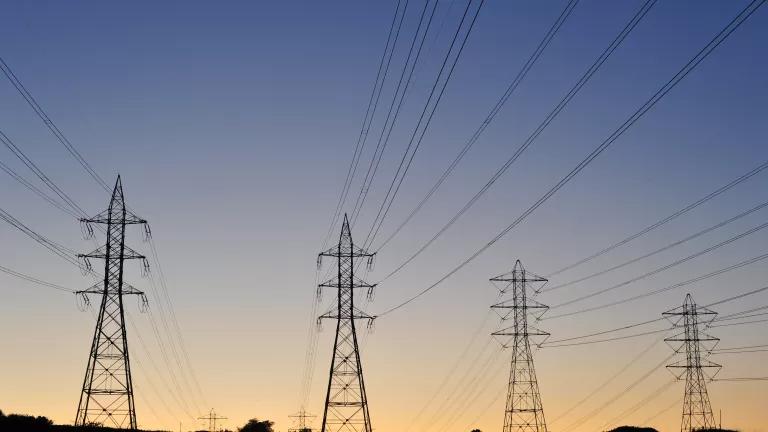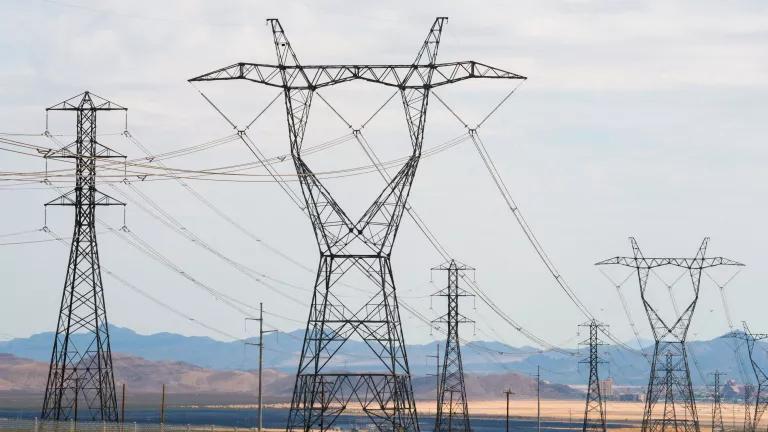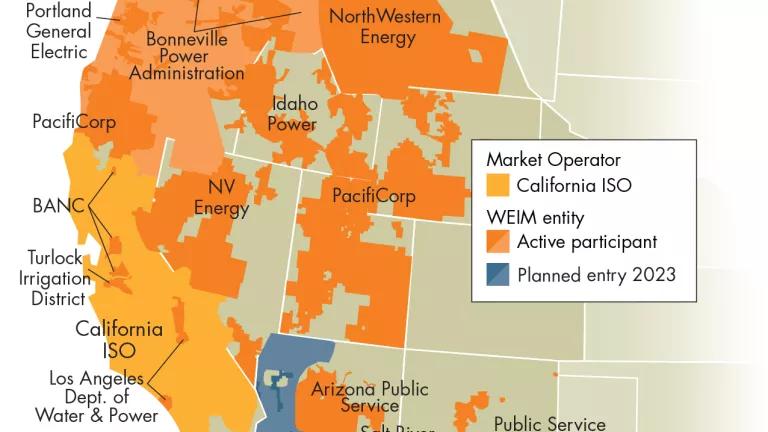Western Electricity Grid Is Entering Its Day-Ahead Market Era
NRDC is working with stakeholders to safeguard consumer interests and environmental protections as utilities from California to the Great Plains weigh proposals to share energy resources through an organized market.
Integrating utilities across the western United States into a single, organized power market is the best way to keep prices low, bolster reliability, and hasten decarbonization. In pursuit of that goal, NRDC is working with stakeholders to safeguard consumer interests and environmental protections as utilities across a vast region, from California to the Great Plains, weigh proposals to share energy resources through an organized market.
The electricity grid that spans the Western Interconnection is fragmented into 38 separate utility areas. This balkanization raises power costs and impedes clean energy development. Only in California, where the California Independent System Operator (CAISO) operates a wholesale market that brings most utility areas in California and some in Nevada under one umbrella, do consumers see the benefits of a Regional Transmission Organization (RTO). Thankfully, progress toward western grid integration is accelerating.

RTOs across the country
CAISO and the Southwest Power Pool (SPP), the RTOs for California and the central United States, respectively, are each developing proposals to allow utilities, clean energy producers, and others across the West to buy and sell electricity for the following day. These offerings, known as “day-ahead markets,” will help grid operators balance supply and demand and build upon existing “real-time markets” that offer similar services but in a more limited time frame—just before electricity is generated. If these markets are designed well and have broad participation from stakeholders, day-ahead dispatch services will increase power sharing across the region, improve grid reliability, encourage the development of renewable energy resources, and lower prices.
The development of day-ahead markets
NRDC has been an active participant in the development of CAISO’s day-ahead market, the Extended Day-Ahead Market (EDAM), over the past several months. CAISO has completed its EDAM proposal and plans to submit it to the Federal Energy Regulatory Commission for approval later this year. Pending approval, EDAM could be operating as soon as early 2025. NRDC also has been helping to craft SPP’s day-ahead market proposal—Markets+—and recently became a formal stakeholder in the development of Markets+ phase one. NRDC was in Westminster, Colorado, last week for an initial stakeholder meeting.
In each case, NRDC has advocated for day-ahead market offerings that are transparent, safeguard reliability, and accurately track and report greenhouse gas emissions.
However, while committed to each organization’s stakeholder process, NRDC believes the outcome that will deliver optimal benefits for the West is a single day-ahead market. A larger, single, day-ahead market will amplify financial benefits for the region and boost reliability by significantly expanding the capacity for resource sharing. A dual-market structure could do the opposite by splitting the region and limiting resource sharing.
For example, under a two-market scheme, we could see the creation of large “seams” between markets that likely will raise the cost of energy transfers. CAISO isn’t going away, so any new western regional market will immediately create a seam between it and CAISO or its successor. In the East, the two largest RTOs—MISO and PJM—spent many years negotiating lengthy seams agreements that are hundreds of pages long to reduce so-called “market-to-market" barriers. We can avoid such costly and messy outcomes in the West with the creation of a single market.
Governance and public participation are strong points for a CAISO-operated day-ahead market. Any party can join in CAISO-led discussions on virtually any issue and CAISO’s proposed governance structure for its day-ahead market includes meaningful representation in the decision-making process from participating states outside of California and other stakeholders. By contrast, SPP’s existing rules on stakeholder participation present challenges. For example, SPP charges thousands of dollars annually for most parties to participate in stakeholder proceedings. Also, to date, SPP has not proposed a formal voice for western states, in contrast to the well-established voice of SPP’s eastern operations in the Regional State Committee.
In addition, CAISO has extensive experience in the Western Interconnection. CAISO currently covers about one-fourth of the region’s retail electricity use and generation resources, and it has years on the ground operating the first real-time market in the West. Since 2014, CAISO has successfully managed a voluntary real-time market, the Western Energy Imbalance Market (WEIM), which allows participants to buy and sell power close to the time electricity is consumed, giving system operators real-time visibility across neighboring grids. The WEIM covers nearly 80 percent of the electrical load in the Western Interconnection, serving all or part of 11 states, and it saw three new entities join during the first week of April, further expanding and strengthening regional coordination. The WEIM is a key element of the region’s clean energy transition and has enabled more than $3.4 billion in savings and significant carbon reductions for the region.
The prospect of SPP organizing the West under a day-ahead market, on the other hand, has difficult barriers to overcome, due to the haste in which the RTO is developing its day-ahead market. Additionally, SPP has limited experience in managing entities in the West—its Western Energy Imbalance Service Market (WEIS) only began operating in 2021—and in managing and tracking greenhouse gas (GHG) emissions. That’s a concern, given that states across the West have robust clean energy and climate goals wherein GHG tracking is essential, including California, Colorado, Nevada, New Mexico, Oregon, and Washington.

WEIS footprint
Going beyond the day-ahead market
Extending day-ahead market services is an important and significant next step in market development in the West and is estimated to bring more than a billion dollars in annual savings to consumers. But it won’t deliver the level of benefits that allowing utilities across multiple states to share energy resources through an RTO can.
RTOs, independent organizations that run wholesale electricity markets and optimize transmission planning and use, offer many benefits, including:
- More efficient use of transmission systems
- The elimination of rate “pancaking,” which occurs when a buyer or seller of electricity must pay a separate charge for sales across multiple transmission systems
- Fewer barriers to entry for new, cleaner power supply, especially wind and solar power, and advanced technologies for power supply and demand
Linking western utilities through a single RTO would create hundreds of thousands of jobs, spur economic growth, and save customers $2 billion a year on their electric bills according to a July report from Advanced Energy Economy. Along with significant economic benefits, a western RTO would ease the integration of renewables onto the grid, improve transmission planning across the region, and enhance reliability by expanding power resource options for all participants. As with a western day-ahead market, a single western RTO is better than two when it comes to cost savings, decarbonization, and reliability.
Now more than ever, it is time to integrate the western electricity grid. Developer appetite for building new wind and solar projects is rising, thanks to tax credits included in the Inflation Reduction Act. The western United States is home to some of the best wind resources in the country, as well as high-quality solar. Better transmission planning and large, transparent energy markets will accelerate the integration of new clean energy projects and allow large wind and solar projects sited in remote rural areas to help meet demand in population centers.
A CAISO-operated day-ahead market, and eventually a fully integrated western grid, would build on the success of CAISO’s real-time market services, enhance coordination, improve long-term planning, and provide the cleanest, cheapest, and most efficient electricity system.




